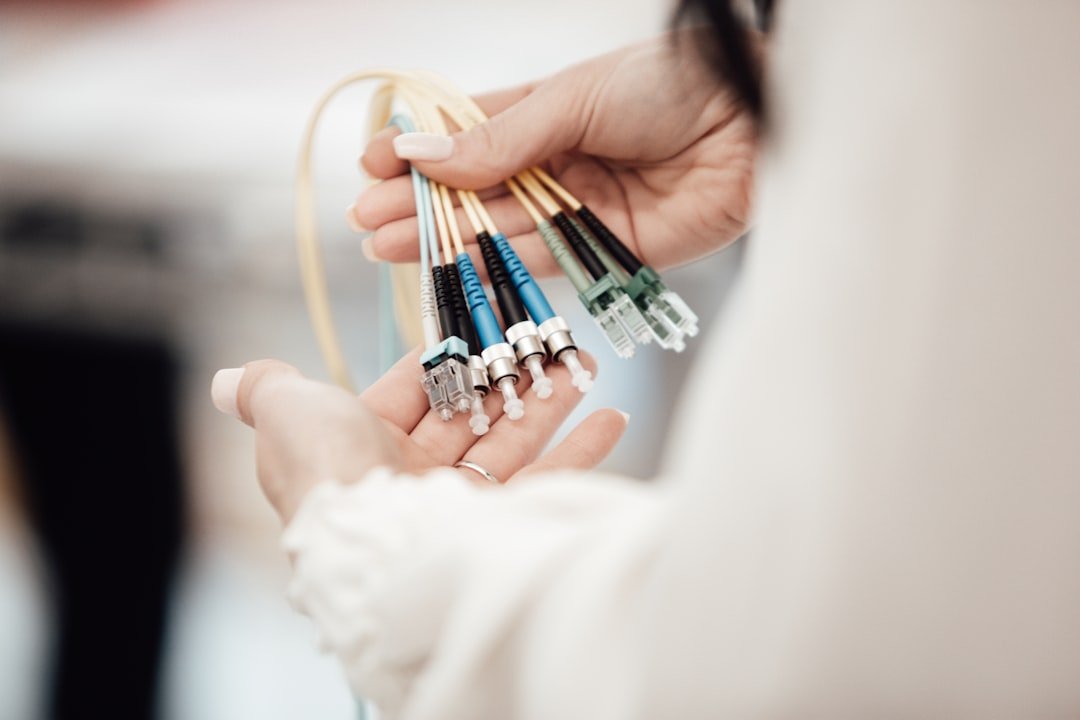The Importance of High-Quality USB Cables for Printer Performance
USB cables play a crucial role in the performance of printers. They are responsible for transmitting both data and power between the printer and the computer. Without a reliable USB cable, the printer may experience various issues that can affect its functionality and overall performance.
When you connect your printer to your computer using a USB cable, it serves as the communication link between the two devices. The USB cable allows data to be transferred from the computer to the printer, enabling you to print documents, photos, and other files. Additionally, it also provides power to the printer, allowing it to operate.
Key Takeaways
- Low-quality USB cables can negatively impact printer functionality
- USB cable quality affects print speed and quality
- Longer USB cables can lead to decreased printer performance
- Shielding in USB cables is important for optimal printer performance
- Investing in high-quality USB cables can improve printer performance and durability
The Impact of Low-Quality USB Cables on Printer Functionality
Using low-quality USB cables can have a significant impact on the functionality of your printer. These cables are often made with subpar materials and may not meet the necessary standards for data transmission and power delivery.
One common problem caused by low-quality USB cables is data transmission errors. These errors can result in print jobs being interrupted or incomplete, leading to frustration and wasted time. Additionally, low-quality cables may not be able to deliver sufficient power to the printer, causing it to disconnect or not function properly.
Another issue that can arise from using low-quality USB cables is slow printing speeds. These cables may not be able to handle high-speed data transfer, resulting in longer print times. This can be particularly frustrating when you have a large number of documents or photos to print.
How USB Cable Quality Affects Print Speed and Quality
The quality of the USB cable can have a direct impact on both the speed and quality of printed documents. A high-quality cable ensures that data is transmitted accurately and efficiently, resulting in faster print speeds.
Data transmission errors caused by low-quality cables can lead to print quality issues. For example, blurry or distorted text and images may appear on printed documents. This can be particularly problematic when printing important documents or high-resolution photos.
By investing in a high-quality USB cable, you can ensure that data is transmitted accurately, resulting in crisp and clear prints. This is especially important for professional settings where print quality is crucial.
The Connection Between USB Cable Length and Printer Performance
| USB Cable Length (ft) | Printer Performance (pages per minute) |
|---|---|
| 3 | 10 |
| 6 | 8 |
| 10 | 6 |
| 15 | 4 |
The length of the USB cable can also impact printer performance. Longer cables can introduce additional resistance, which can lead to data transmission errors and power issues.
When using a longer USB cable, the signal strength can weaken over distance. This can result in data loss or corruption, leading to slower printing speeds and lower print quality. Additionally, longer cables may not be able to deliver sufficient power to the printer, causing it to malfunction or disconnect.
It is important to choose the appropriate cable length for your printer setup. If you need to connect your printer to a computer that is far away, consider using a USB extender or a shorter cable with a repeater to maintain optimal performance.
The Importance of Shielding in USB Cables for Printer Performance
Shielding is an essential feature of USB cables that can prevent electromagnetic interference (EMI) and radio frequency interference (RFI). These interferences can disrupt data transmission and power delivery, leading to slower printing speeds and lower print quality.
EMI can be caused by nearby electronic devices or power sources, while RFI can be caused by wireless signals or radio waves. Both types of interference can introduce errors into the data being transmitted between the computer and the printer.
High-quality USB cables are often equipped with shielding to minimize the impact of EMI and RF
This ensures that data is transmitted accurately and power is delivered consistently, resulting in optimal printer performance.

The Role of USB Cable Material in Printer Performance and Durability
The material used in USB cables can also impact printer performance and durability. High-quality materials, such as copper and gold, are often used in the construction of reliable USB cables.
Copper is an excellent conductor of electricity and is commonly used in USB cables to ensure efficient power delivery. Gold is often used for the connectors as it is highly resistant to corrosion, ensuring a reliable connection between the printer and the computer.
USB cables made with high-quality materials are more durable and less prone to damage. They are less likely to break or fray, ensuring a longer lifespan for the cable. This can save you money in the long run by reducing the need for frequent cable replacements.
USB Cable Compatibility: Why Using the Right Cable Matters
Using the right USB cable is crucial for optimal printer performance. USB cables come in different types and versions, and using the wrong cable can result in data transmission errors and power issues.
USB cables are available in various types, including USB-A, USB-B, and USB-C. It is important to choose a cable that matches the ports on both your printer and computer. Using an incompatible cable can lead to connectivity issues and poor performance.
Additionally, USB cables also come in different versions, such as USB 2.0, USB 3.0, and USB 3.1. Each version offers different data transfer speeds and power delivery capabilities. Using a cable that does not support the required version can result in slower printing speeds and lower print quality.
It is essential to check the specifications of your printer and computer to determine the appropriate cable type and version for optimal performance.
The Benefits of Investing in High-Quality USB Cables for Your Printer
Investing in high-quality USB cables for your printer offers several benefits. Firstly, it ensures reliable data transmission and power delivery, resulting in faster printing speeds and better print quality. This is particularly important for professional settings where efficiency and accuracy are crucial.
Using high-quality cables also reduces the risk of connectivity issues and interruptions during print jobs. This saves time and frustration by minimizing the need to troubleshoot and restart print jobs.
Furthermore, high-quality USB cables are more durable and long-lasting. They are less likely to break or fray, reducing the need for frequent cable replacements. This can save you money in the long run by avoiding the cost of purchasing new cables or repairing your printer due to cable-related issues.
How to Choose the Best USB Cable for Your Printer
When choosing a USB cable for your printer, there are several factors to consider. Firstly, consider the cable length that you need for your setup. Measure the distance between your printer and computer and choose a cable that is long enough to reach without excessive slack.
Next, ensure that the cable is compatible with both your printer and computer. Check the specifications of your devices to determine the appropriate cable type and version.
Consider investing in a USB cable with shielding to minimize the impact of EMI and RF
This ensures reliable data transmission and power delivery, resulting in optimal printer performance.
Lastly, choose a USB cable made with high-quality materials, such as copper and gold. These materials ensure efficient power delivery and a reliable connection between your printer and computer.
Avoid common mistakes when selecting USB cables for printers, such as using cheap or generic cables. These cables may not meet the necessary standards for data transmission and power delivery, resulting in poor printer performance.
Maximizing Printer Performance with High-Quality USB Cables
In conclusion, USB cables play a crucial role in the performance of printers. They transmit both data and power between the printer and computer, enabling you to print documents, photos, and other files.
Using low-quality USB cables can have a significant impact on printer functionality. These cables can cause data transmission errors, slow printing speeds, and poor print quality.
USB cable length, shielding, material quality, and compatibility are all important factors to consider when choosing a cable for your printer. Investing in high-quality USB cables ensures reliable data transmission and power delivery, resulting in faster printing speeds, better print quality, and a longer lifespan for the cable.
By selecting the best USB cable for your printer, you can maximize its performance and enjoy hassle-free printing.
If you’re in need of a reliable USB cable for your printer, look no further than the MP Mobile Pixels 2-in-1 USB Cable. This versatile and convenient solution is perfect for all your connectivity needs. Whether you’re printing important documents or transferring files, this cable ensures fast and efficient data transfer. With its durable construction and high-quality materials, you can trust that this cable will withstand daily use. Don’t settle for subpar cables when it comes to your printer – choose the MP Mobile Pixels 2-in-1 USB Cable for reliable performance. Check out the article here to learn more about this must-have accessory.




Post Comment